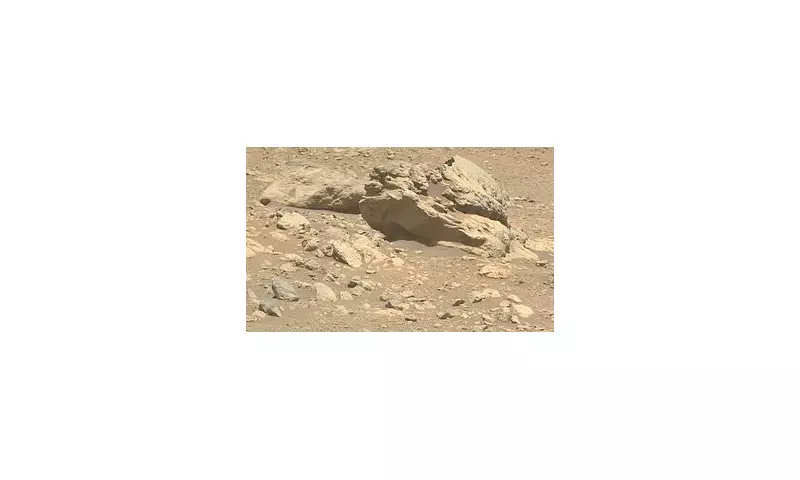
A Puzzling Discovery on the Red Planet
Scientists at NASA have been left perplexed by the discovery of a mysterious rock on Mars that, according to initial analysis, doesn't appear to belong there. The Perseverance rover made the startling find while exploring the rim of the vast Jezero crater, a 28-mile-wide (45 kilometre) basin believed to have once been filled with water and potentially hosting life.
The Sculpted Stranger: Phippsaksla
The enigmatic rock, which mission scientists have named Phippsaksla, measures an impressive 31 inches (80 centimetres) across. It first caught the team's attention due to its unusually sculpted appearance. To determine its composition, Perseverance employed its SuperCam instrument, using a powerful laser to heat a small section of the surface. The results revealed something extraordinary: Phippsaksla contains exceptionally high levels of iron and nickel.
This metallic signature is highly unusual. Throughout its mission in the Jezero crater, Perseverance has not encountered a single other rock with such a rich concentration of these metals. Dr Candice Bedford, a geologist from Purdue University and a Perseverance operator, elaborated on the finding in a NASA blog post. She wrote: 'This element combination is usually associated with iron-nickel meteorites formed in the core of large asteroids, suggesting that this rock formed elsewhere in the solar system.'
An Interstellar Visitor?
While finding meteorites on Mars' heavily cratered surface is not uncommon, the specific composition of Phippsaksla makes it a rare specimen. Professor Gareth Collins, a meteor impact expert from Imperial College London, confirmed that Mars is bombarded by space rocks 'all the time'. He explained that the entire Martian surface has been shaped by impacts, with numerous meteors striking the planet daily. However, the vast majority of these are rocky; only about one in twenty meteorites are rich in iron and nickel.
These metallic meteorites are thought to originate from the cores of large asteroids, where heavy minerals like iron and nickel sank to the centre during the solar system's formation. The discovery is particularly intriguing because, despite other rovers like Curiosity and Spirit finding similar iron-nickel meteorites, this is a first for Perseverance within the Jezero crater. Dr Bedford noted the unexpected nature of this, given the crater's age and the evidence of numerous smaller impacts.
Due to its exotic nature, NASA scientists plan to conduct further analysis on Phippsaksla to confirm whether it is indeed a meteorite. If proven, Perseverance will join the esteemed ranks of Mars rovers that have investigated these rare celestial visitors. This discovery follows other unusual finds by the rover, including a peculiar 'helmet'-shaped rock covered in spherules, which may have been formed by ancient volcanic activity on the Red Planet.




